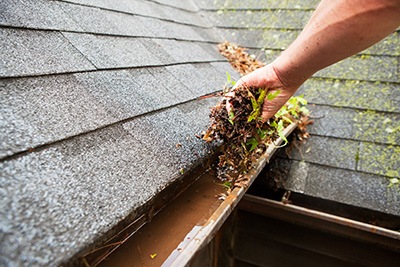When fall rolls in, your roof quietly takes on a bigger job, keeping cold, wind, and wet weather out. But it can’t do that well if it’s already in rough shape. Getting ahead of issues now can help you avoid ice dams, leaks, and surprise repairs when snow is falling and temperatures drop. At Evenhouse Roofing, in Davenport, IA, we help homeowners protect their homes by giving their roofs a seasonal check-up before the weather turns.
Look for Leaks Before the Weather Turns
The end of summer is a great time to look for any signs your roof might be leaking. Head up to your attic on a bright day and look for sunlight peeking through. You may also notice wet patches, damp insulation, or musty odors. Those are all clues that water’s getting in somewhere. If you see anything suspicious, don’t delay. Once temperatures drop and winter weather arrives, even a small leak can get worse fast. Acting now allows you to get repairs while the weather is still mild.
Clear Out Gutters and Downspouts
One of the easiest things you can do before fall gets rolling is to clean out your gutters. Leaves, sticks, and debris pile up fast, especially after storms. If your gutters are clogged, rainwater can’t flow off your roof as it should. Instead, it pools up and, sometimes, pushes back under the shingles. If that water freezes later, it can cause even more trouble, like ice dams, broken gutters, or lifted shingles. If you spot sagging gutters or loose brackets, contact a professional for repairs.
Inspect Shingles From the Ground
Shingles take the brunt of summer storms and heat. Before winter arrives, do a full walkaround of your home and look at your roof from every angle. If you notice any missing shingles, lifted edges, or ones that are cracked or curling, make a note. You might also find pieces of shingles or granules in your yard or gutters; that’s a clue your roof’s surface is breaking down. These issues leave your roof more vulnerable to leaks once snow or rain hits.
Trim Back Trees That Could Cause Trouble
Branches that hang too close to your roof can spell trouble in fall and winter. Wind and early snow can bring them down quickly. Even smaller limbs can knock shingles loose or damage your gutters. If you’ve got trees with long branches hanging directly over your roof, late summer is the right time to trim them. Trimming also reduces the number of leaves to clean out later and makes it more difficult for pests to climb up and find a way into your attic. If a branch looks dead or cracked, go ahead and cut it back, or hire a professional to do it before the weather changes.
Check Vents, Flashing, and Other Roof Fixtures
Look around chimneys, roof vents, and skylights for any spots where metal flashing might be loose, bent, or rusted. Those areas often show wear first and are more likely to leak during a storm or melt-off. Runoff collects in these places, and if the flashing isn’t doing its job, water can seep under the shingles and into your home. In the colder months, those small gaps can lead to substantial problems that can be expensive to fix. Our roofers can replace damaged flashing and reseal around roof protrusions to increase your roof’s lifespan.
Sagging Areas
If part of your roof appears to sag or looks uneven, don’t wait to take action. This can be a sign of a rotting roof deck or other serious issues compromising the structure of your roof. Left unaddressed, these weak spots can lead to sudden leaks or even collapse under the weight of winter snow. Have a professional inspect and repair any sagging areas now to prevent costly damage later.
Contact Your Local Roofing Experts
At Evenhouse Roofing, we have been serving the residents of Davenport, IA, since 2015. We can inspect your roof to ensure it is ready to handle winter weather. You can also count on us for repairs and roof replacement. Contact us today to schedule an appointment with one of our experienced roofers.
